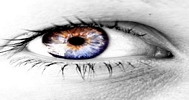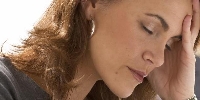|
|
 Acne (1,500) Acne (1,500)
 Addictions (1,500) Addictions (1,500)
 Advice (1,500) Advice (1,500)
 Allergies (1,092) Allergies (1,092)
 Alternative Medicine (1,500) Alternative Medicine (1,500)
 Anti Aging (1,500) Anti Aging (1,500)
 Breakup (1,500) Breakup (1,500)
 Cancer (1,499) Cancer (1,499)
 Dental Care (1,500) Dental Care (1,500)
 Disabilities (1,500) Disabilities (1,500)
 Divorce (1,500) Divorce (1,500)
 Elderly Care (1,498) Elderly Care (1,498)
 Goal Setting (1,500) Goal Setting (1,500)
 Hair Loss (1,500) Hair Loss (1,500)
 Health and Safety (1,497) Health and Safety (1,497)
 Hearing (1,500) Hearing (1,500)
 Law of Attraction (1,499) Law of Attraction (1,499)
 Marriage (1,500) Marriage (1,500)
 Medicine (1,497) Medicine (1,497)
 Meditation (1,499) Meditation (1,499)
 Men's Health (1,500) Men's Health (1,500)
 Mental Health (1,500) Mental Health (1,500)
 Motivational (1,500) Motivational (1,500)
 Nutrition (1,495) Nutrition (1,495)
 Personal Injury (1,499) Personal Injury (1,499)
 Plastic Surgeries (1,500) Plastic Surgeries (1,500)
 Pregnancy (1,496) Pregnancy (1,496)
 Psychology (1,500) Psychology (1,500)
 Public Speaking (1,500) Public Speaking (1,500)
 Quit Smoking (1,500) Quit Smoking (1,500)
 Religion (1,499) Religion (1,499)
 Self Help (1,500) Self Help (1,500)
 Skin Care (1,500) Skin Care (1,500)
 Sleep (1,500) Sleep (1,500)
 Stress Management (1,500) Stress Management (1,500)
 Teenagers (1,492) Teenagers (1,492)
 Time Management (1,500) Time Management (1,500)
 Weddings (1,500) Weddings (1,500)
 Wellness (1,500) Wellness (1,500)
 Women's Health (1,500) Women's Health (1,500)
 Women's Issues (1,500) Women's Issues (1,500)
|
Clinical featuresThe disease begins as prominent flush. Initially it is limited to lower half of the nose and then extends to involve the blush area of the face, chin, and central forehead. With time the intermittent episodes become long lasting. Residual erythema may persist. This is accompanied by telangiectasia, blanching on diascopy. This is followed by the greasy appearance over the face and formation of papules, pustules, nodules, and cysts localized to the central one third of the face. Comedones are conspicuous by their absence. rhinophyma may develop, especially in men in consequence to hyperplasia of the sebaceous glands over the nose. the ocular lesions are often benign and restricted to blepharitis and conjunctivitis. DiagnosisThe diagnosis is primarily clinical. However, it may be supplemented by histopathology. Hematoxylin and eosin stained section reveals the folllowing - Lymphohistiocytic inflammatory infiltrate around upper dermal blood vessels
- Dermal edema
- Dermal elastosis
- telangiectasia
- Loss of archiectecture of upper dermis
- Hypertrophy and hyperplasia of sebaceous glands
Rosacea needs to be differentiated from the Acne, periorificial dermatitis, seborrheic dermatitis, and photodermatitis. TreatmentRosacea being a progressive disorder should be intercepted with systemic and topical measures similar to that of acne vulgaris. the drugs erythromycin 250 mg four times a day, till the symptoms subside. 200 mg of metronidazole thrice a day, till symptoms subside. 0.5 mg/kg/day of isotretinoin for 20 weeks. Topical application of 2 percent erythromycin, preferably at night time. Unani herbal treatmentDecoction musaffi khoon, Majoon Ushba 10 gm twice daily, Majoon chochini 10 gm two times daily till symptoms subsides. Marham hina for local applicant at bed time.
|
|
|



